Our second day in sunny Scotland was a trip, this time behind a diesel engine, from Inverness on the east coast to the Kyle of Lochalsh on the west coast. Once again the views from the train were stunning and each time we passed through a village it was fun looking at all the back gardens, I don’t think I have ever seen so many trampolines!
This time though, it was by the fairly new bridge, we just popped over in our coach for a quick visit.
We stopped at this lovely castle for lunch. Loch an Eilein means Loch of the Island and was built between 1222 ans 1298 by the Bishop of Moray. The tower was added in 1380 by Wolf of Badenoch, the grandson of Robert the Bruce, who used it as his hunting lodge. These days it is used as a centre to protect the ospreys that nest nearby.
We saw loads of Rowan berries ripening in the sunshine, the birds shouldn’t go hungry this winter.
Again we stopped by Loch Ness on our way back to Inverness and the undergardener and I burst into song when we saw this, but this wasn’t the Yellow Submarine of Beatles fame, but the submersible that was used to try and find the Loch Ness monster, many years ago.
The next day we woke to thick fog which didn’t bode well for our trip to the Cairngorm mountains which are to the south of Inverness. We stopped first though at the visitor centre at Culloden Moor which was the spot where the Jacobite rising of 1745 took place. The weather on that occasion was was very similar to the fog that we had, where people suddenly appeared out of the mist.
The battle was over in just an hour. The Jacobite army consisted mainly of catholic Highland Scots who wanted Bonnie Prince Charlie to be king and the mainly protestant English army who wanted George 1st of Hanover to be king. This was the last pitched battle on British soil.
We saw masses of this as we were travelling, all along the roadsides and railway lines. It looks very pretty when there is drift of it, but I always pull it out when it appears in the garden as it is so rampant!
This is a wee bothy that we saw at the edge of the battlefield, it is a re-construction, but there was a farmhouse here on the maps of 1745.
Isn’t he lovely! I hasten to add that there was a sturdy metal gate between us!
You can see that the fog was now lifting and we made our way to the Cairngorm Mountain Railway Funicular.
Waiting in the entrance to the Funicular Railway, I was able to have a good look at all the carvings of the wildlife that is found in the Cairngorms, this is a Golden Eagle.
Once again we had fantastic views all round us. The fog has gone completely, the sun is out, but the wind, it was freezing! The fleece was used at last.
The only crossing point on the railway. The carriage going down pulls the carriage coming up.
We then made our way by coach to the Strathspey Steam Railway where we found the bagpipes being played.
We found out later when, they all got into our carriage, that the pipers were all German and were friends of the engine driver!
At last I found the heather that I had been looking for! I thought we would have seen some up on the Cairngorms but had to wait until we were down in the valley again.
That is the end of our three days travelling round by steam and diesel, the next day it was time to come home, back to the south of England. The weather couldn’t have been better, I have never seen the highlands of Scotland look so beautiful and really enjoyed our few days here. The undergardener had a surprise up his sleeve, which will be revealed soon.

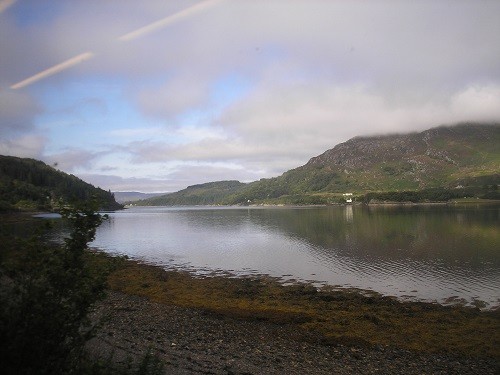
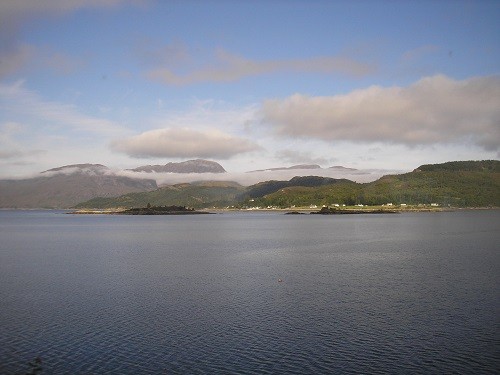




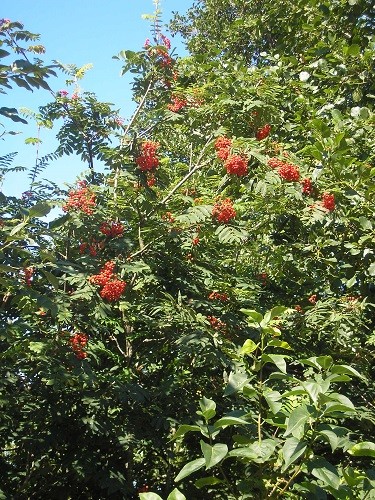


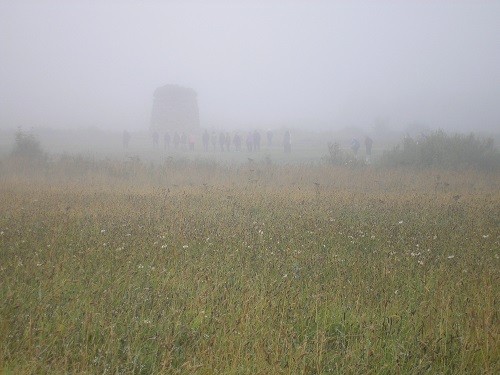
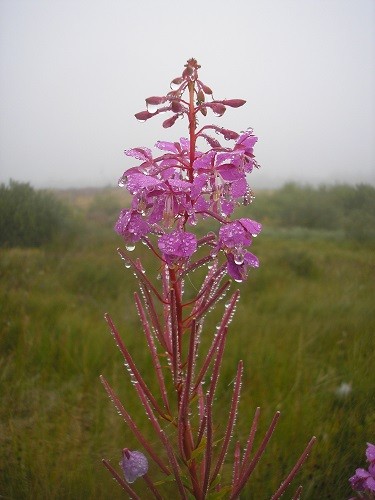


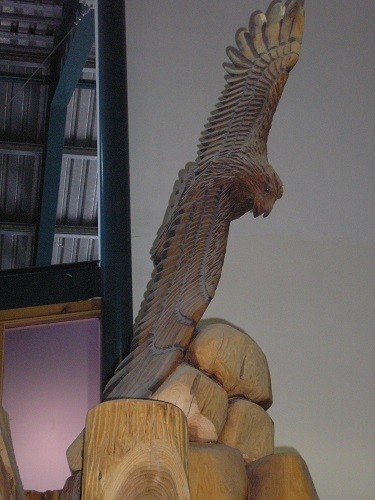




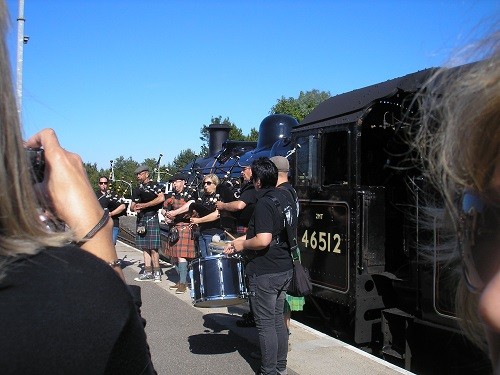
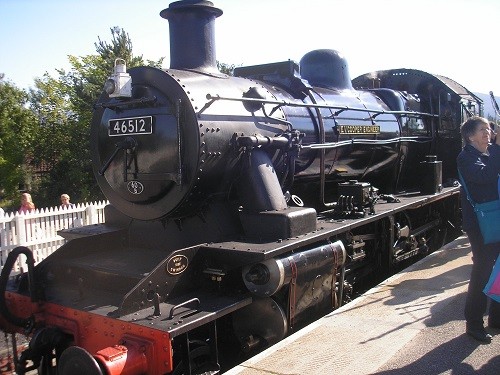


A perfect trip Pauline. You went to some stunning areas of the Highlands. I do love Skye, the scenery is wonderful. But I don’t think I’ve ever seen it in weather quite that beautiful!
I’ve never seen the Highlands looking so good before Jessica and we’ve been quite a number of times for holidays. When we stayed on Skye, many, many years ago, we did so much walking amongst the wonderful scenery with the children and our dog, it was totally amazing!
Thanks so much for sharing your photos and the tale of your trip to Scotland! I enjoyed it immensely. I read a lot of British books, and I’ve always wondered what a bothy was. Your picture helped a lot to give it context. Your rosebay willow herb looks a lot like our fireweed, I bet they’re related plants. It can run rampant here too if you neglect to pull it out.
I’m so glad you are enjoying our trip Alison, it was a wonderful 3 days. Yes, I think our rosebay willow herb is the same as your fireweed, lovely plants, if only they didn’t seed everywhere! I’ve tried growing the white variety in the garden, but it doesn’t seem to like our soil, maybe just as well!
Your photos are gorgeous, Pauline! Really atmospheric and such beautiful places that you both went to. (Although I don’t envy you the misty day on Culloden Moor!) That castle looks quite forbidding to me – obviously built to withstand bad weather and worse neighbours!
Thanks Caro, I don’t think you can beat the scenery of the British Isles, but you do need to get good weather! The misty start to our day at Culloden was quite atmospheric, were those tourists we could see or were they Jacobites? I think the Castle has had a Victorian makeover, it doesn’t look quite as it did in former times.
Oh I’m enjoying the tour Pauline – such fabulous scenery 🙂
Glad you’re enjoying it Anna, we certainly did! The scenery was amazing and looked so gorgeous in the sunshine.
Perfect weather indeed, it looks gorgeous Pauline; and now I have to wait for the surprise the under gardener had for you, you intrigue me!
I’m afraid you will have to wait a little longer Christina, your very own Foliage Day comes next, after that I can post the surprise!
The scenery is just amazing! Whatever could the surprise be 🙂
We went a just the right time, people working in the hotel said that it was the best week of the year, weatherwise. Just a few more days till I post the last one of our Scottish break, after Foliage Day on the 22nd, I hope it isn’t an anti climax!